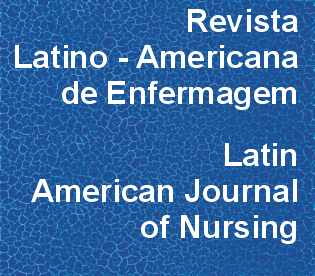Muertes por homicidios: serie histórica
DOI:
https://doi.org/10.1590/0104-1169.3603.2511Resumen
OBJETIVO: describir la mortalidad por homicidios en Itabuna-Bahía. MÉTODO: estudio con delineamiento híbrido, ecológico y de tendencia temporal. Fueron calculados los coeficientes de mortalidad por 1.000 habitantes ajustados por la técnica directa, la mortalidad proporcional según sexo e intervalo de edad y los Años Potenciales de Vida Perdidos. RESULTADOS: desde 2005 las causas externas pasaron de la tercera para la segunda causa de muerte, siendo los homicidios responsables por el incremento. En los 13 años analizados, los homicidios ascendieron 203%, con 94% de esas muertes ocurriendo en la población masculina. Entre esta, el crecimiento sucedió principalmente en el intervalo de edad de 15 a 29 años de edad. Se encontró que 83% de las muertes fueron por arma de fuego; 57,2% ocurrieron en la vía pública; y 98,4% en la zona urbana. En 2012, los 173 homicidios ocasionaron 7.837 años potenciales de vida perdidos, con cada muerte provocando, en promedio, la pérdida de 45,3 años. CONCLUSIONES: la mortalidad por homicidios en una ciudad de porte medio en Bahía alcanza índices observados en las grandes metrópolis del país en la década de 1980, evidenciando que el fenómeno de la criminalidad violenta - antes predominante apenas en los grandes centros urbanos - avanza para el interior provocando cambios en el mapa de la violencia homicida del país.Descargas
Los datos de descarga aún no están disponibles.
Descargas
Publicado
2014-12-01
Número
Sección
Artículos Originales
Licencia
Los derechos de autor son propiedad exclusiva de la Revista Latino-Americana de Enfermagem (RLAE), transferidos a través de la Declaración de Transferencia de Derechos de autor (que está en el formulario individual de declaración) firmada por los autores. Para el uso de artículos, RLAE adopta la Licencia Creative Commons CC BY-NC atribución no comercial (abstracto o código completo de licencia). Con esta licencia es permitido acceder, descargar (download), copiar, imprimir, compartir, reutilizar y distribuir los artículos, desde que para uso no comercial y con citación de la fuente, dando los créditos de autor a la Revista Latino-Americana de Enfermagem. En tales casos, no se necesita permiso de los autores o editores.Cómo citar
Costa, F. A. de M. M., Trindade, R. F. C. da, & Santos, C. B. dos. (2014). Muertes por homicidios: serie histórica . Revista Latino-Americana De Enfermagem, 22(6), 1017-1025. https://doi.org/10.1590/0104-1169.3603.2511



